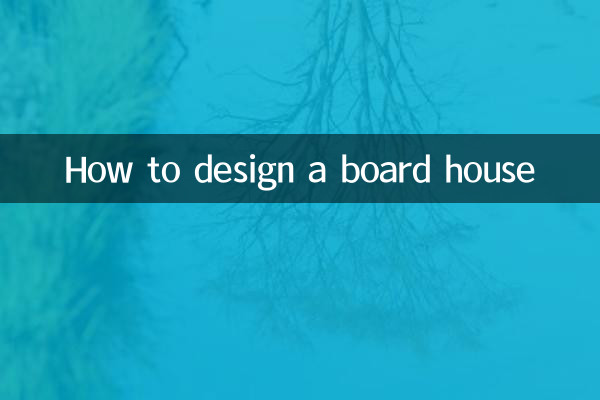How to design a prefabricated house: hot trends and practical guides across the Internet
Recently, with the increase in environmental awareness and the demand for temporary housing, prefabricated house design has become a hot topic. This article will combine the hot spots across the Internet in the past 10 days to provide you with structured data and practical suggestions from dimensions such as design points, material selection, and cost analysis.
1. Popular prefabricated house design trends (data in the past 10 days)

| keywords | Search volume share | Popular application scenarios |
|---|---|---|
| Container board house | 32% | Construction site dormitories, internet celebrity shops |
| Light steel villa | 28% | Rural tourism, emergency housing |
| Modular design | 22% | Temporary hospitals and schools |
| solar panel house | 18% | Field work station, disaster relief |
2. Core elements of board house design
1. Structural safety standards
According to the latest building regulations, board houses need to meet: wind resistance level 8, earthquake resistance level 6, and fire protection level B1. Light steel structures have become the mainstream choice, and their weight is 40% lower than traditional materials.
2. Space layout optimization
| Area (㎡) | Recommended layout | Applicable number of people |
|---|---|---|
| 15-20 | Single room + bathroom | 1-2 people |
| 30-40 | Two bedrooms and one living room | 3-4 people |
| 60+ | Multifunctional partition | Office/commercial use |
3. Material selection cost comparison
| Material type | Unit price (yuan/㎡) | Service life | Thermal insulation properties |
|---|---|---|---|
| Color steel plate | 120-180 | 5-8 years | Average |
| Glass wool sandwich panel | 200-260 | 10-15 years | Excellent |
| ALC plate | 300-400 | 20 years+ | best |
4. Innovative design cases in 2023
1.Folding board house: The expansion speed is 3 times faster than traditional installation, suitable for emergency scenarios
2.Ecological board house: Using recycled materials + vertical greening, carbon emissions are reduced by 65%
3.Smart board room: Integrated IoT temperature control system, reducing energy consumption by 30%
5. Design considerations
• Foundation treatment: Soft soil areas require concrete foundation reinforcement
• Circuit design: reserve more than 20% power margin
• Drainage system: slope ≥3% to prevent water accumulation
• Positioning of doors and windows: avoid dominant wind direction to reduce heat loss
Through the above structured data analysis, it can be seen that the design of modern board houses has developed in the direction of modularization, intelligence and sustainability. It is recommended to choose the optimal solution based on specific usage scenarios, budget and functional requirements.

check the details

check the details